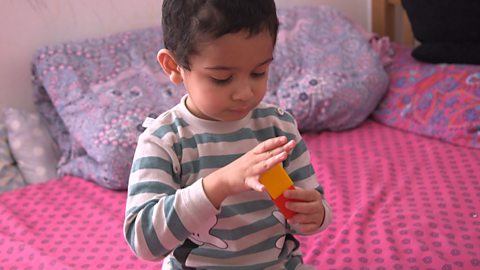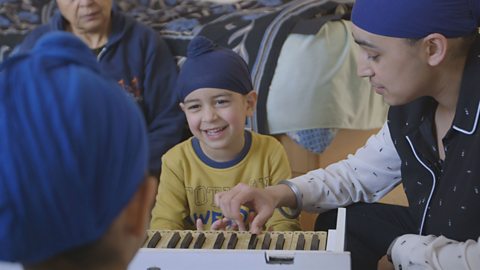±«Óătv > Tips and advice > Bilingual > Play
Playing games is not only great fun for babies and children, but it's also a key part of their early development. And this is no different if you speak more than one language at home with your children.
âWhether you're a bilingual speaker or a modern English speaker, how language develops and embeds itself is the same,â says Speech and Language Therapist, Monal Gajjar.
You need repetition of the language, but more importantly, you need it to be fun and motivational for your child.
Around the age of three, your child starts to develop metalinguistic awareness. This is when they start to reflect on the language theyâre using and consciously choose between different words.
âThatâs when fun games are really crucial,â says Monal. âBecause they allow your child to be engaged, to take the lead and experiment with their language skills.â
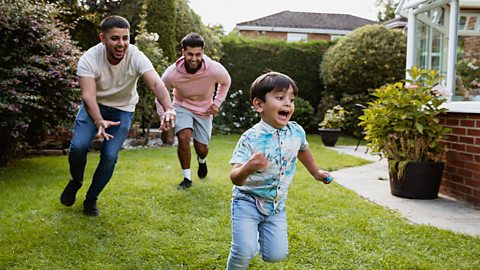
Here are our top 10 multilingual games that you can try at home with your little one:

1. Whispering Game
If your child is lacking confidence, the whisper game is a perfect way to encourage their second language.
Whisper a phrase into their ear and get them to pass it on to another person or teddy in a different language. This game is great for repetition and modelling, giving your child the opportunity to repeat words and phrases and boost their confidence with pronunciation.
2. Phone Call Game
When your child is feeling noisier, you can grab a banana or just use your hand and have a phone call.
Stand at different corners of a room and have children copy what you say to a teddy bear who is learning your language.
âA lot is going on in this game,â Monal explains. âYour child will love taking the leading role with their teddy to teach them the language but will also be constantly picking up on your body language, gesture, intonation and accent.â
3. Playing with Puppets
Make a puppet that only speaks a certain language and encourage your child to translate what you are saying to the puppet.
âThis game is nice because youâre saying their second language belongs also to someone else,â Monal says. âIt makes them question what they can do if someone doesnât understand English or their first language.â

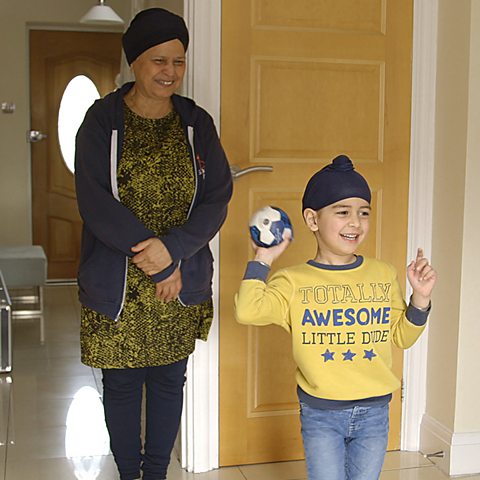
4. Play catch with a twist
Throw a ball to your child and say a word or phrase in one language. When the child throws the ball back to you, they have to say the word or phrase in a different language.
5. Matching Game
All you need for this game is to put together some flashcards with words in two languages. They donât need to be pretty, and you can choose whether to add colour or drawings.
The main thing is you can put them on the floor or a table and play pairs with them, matching words in both languages.
âThis game is fantastic because it encourages the use of lots of the senses,â Monal explains. âThereâs quite a bit of processing going on in a childâs head without them having to come up with the words on their own.â
6. Hide and Seek with Words
This game lets children follow their own lead and be in control. You can take your cards from the matching game and hide the word in one language around the house.
You then hold up the word in the other language and ask your child to go around the house and find the matching pair.

7. I Spy
A classic game that works well in all languages.
Looking for a way to introduce words from your home country? Try playing this game at the supermarket, where you can find foods from all over the world.
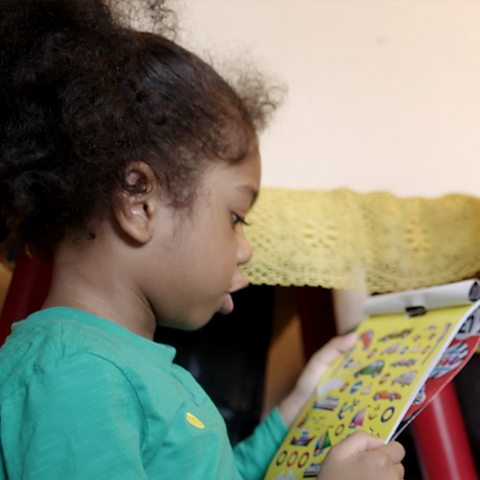
8. Rhyming Games
âLanguage is not just about stringing words together but also phonics, sounds, patterns and intonation,â Monal says. âThere are certain sounds that appear in some languages but not others. It can be fun for you and your child to play around with this concept.â
Start by saying a word in your chosen language and ask your child to say another word that sounds the same. You can chat about the word theyâve chosen or even have fun if itâs not a real word.
âItâs just about getting them to use those sounds and practise moving the muscles in their mouth in different ways.â
9. The Corner Game
Put flags from countries of the languages you speak in the corners of a room (one flag in each corner). Play some music and ask your child to run around the room. When the music stops, they have to quickly find a corner to run to of their choice.
Once theyâre in place, hold something in your hand, like an object or image, and ask your child to say the word that matches the country they are standing in.
âThis is a great game to play with friends and siblings,â says Monal. âYou can swap out who stands in the middle and who shouts out the words.â
10. Photo Fun
Using photos of family members and other objects, like food or modes of transport, ask your child to create a story around Grandma or Grandpa and what theyâve done on that day.
If your child speaks in a certain language to one family member, encourage them to tell the story in that language. Change it up based on what family member youâre talking about.
Monal suggests leaving the photos lying around to allow your child to reflect on the stories theyâve told. âBeing interactive with your child is great during playtime, but giving them time to think about what theyâre chatted about and learnt is just as important.â

Monalâs Top Tips for Parents
Avoid saying ânoâ
Try not to be negative when your child gets a word wrong. Itâs important to praise them and let them know itâs ok to make mistakes. There are lots of ways you can correct them without hurting their confidence.
This helps to create a fun and safe environment for them to explore using their languages, without worrying about getting it perfectly right.
Get the whole family involved
If there are people in your family who speak different languages, itâs great to get them involved with games. Itâs so important for children to see all the languages they speak being valued.
Donât panic if theyâre not engaging
Avoid putting too much pressure on them. Their brains are working really hard, and it's common for them to go through a so-called silent phase.
Continue to have fun in different languages and ensure your child sees people using all their languages comfortably and happily.
Role reversal during playtime can also help. By letting your child take the lead and seeing you speaking the words you want them to speak, theyâll gain confidence and reassurance.
The most important thing is to have fun.


